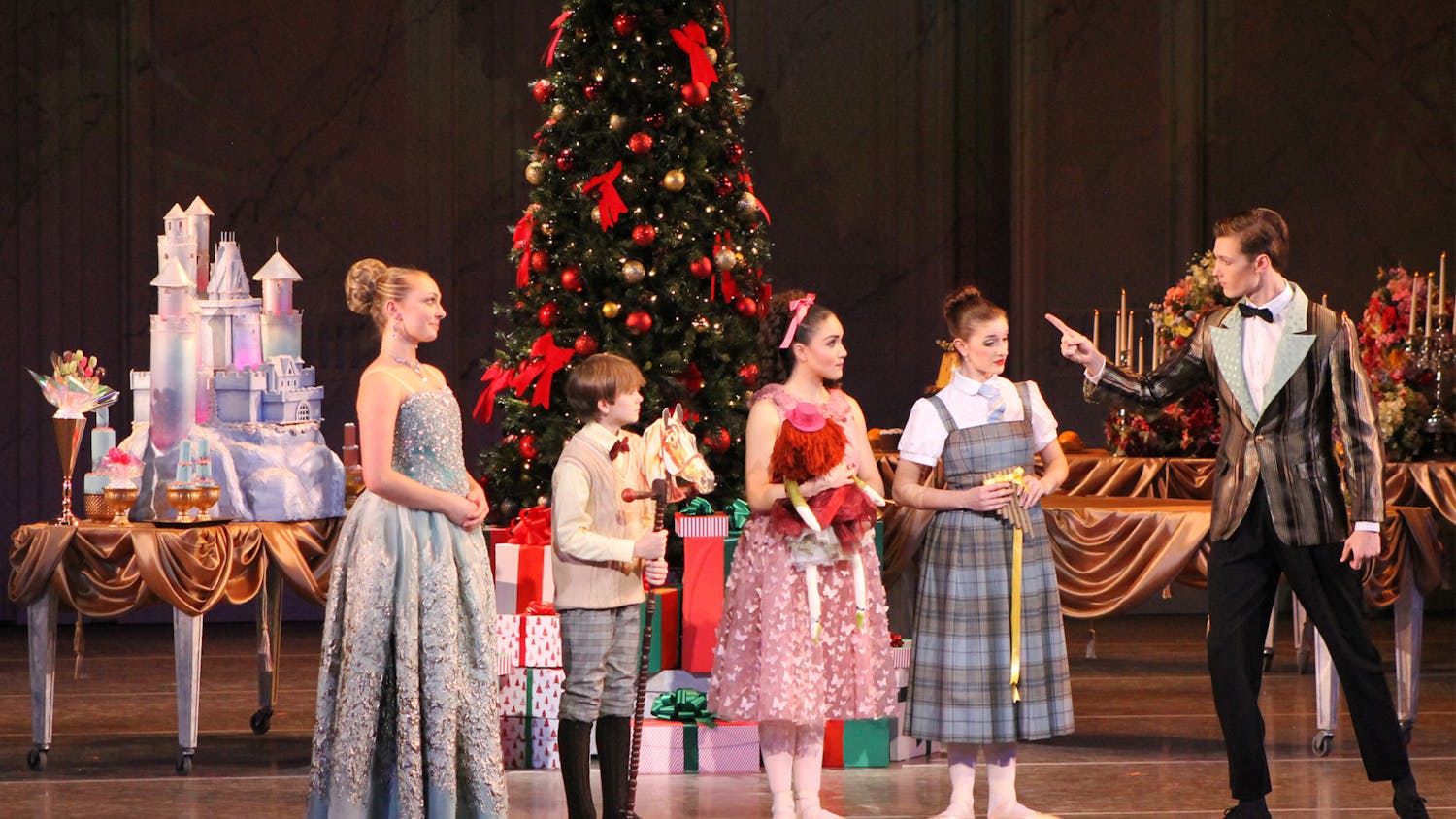From cobalt blue Chinese willow ware plates to a delicate hand-painted IU teacup and saucer, the latest array of shiny things to stop students in their tracks is on display in the Fine Arts Library foyer.\nSenior Andrea Truitt concocted the idea for the display, titled "Prints, Patterns and Porcelain: a selection of ceramics from the Wylie House collections," as well as the corresponding in-house exhibit at the Wylie House Museum, "A Glimpse of Wylie Household Taste: Come to the Table!" She did all the research and put both exhibits together.\nBridget Edwards, curator of education at the Wylie House, said, "As (Truitt) was doing some research, she came to me this summer and said, 'You know, you have a nice range of what a middle class family would have in Bloomington at that time (the 19th century).' I said, 'You do the research,' and she said, 'OK!'" \nEdwards explained that the exhibits are remarkable both because they are the first totally student-driven exhibits, and the Fine Arts Library foyer is the first Wylie House exhibit to appear outside of the actual museum. \nTruitt said that most of the items were already in the museum, so it wasn't hard for her to put together. "Most of the objects come from a bequest by Morton C. Bradley, Jr... the great-grandson of Theophilus and Rebecca Bradley, the second family to live in the house," she said. \nWhile both exhibits are an assortment of pieces of china, the exhibit in the Wylie House is primarily one set of china, originally an 800-piece set. The set, which features a bright pink, blue and gold design with Asian embellishments like bamboo and pagodas, is actually a patented type of tableware called ironware, which was "cheaper and more durable than porcelain," according to Truitt. \nThe Fine Arts Library foyer exhibit has several different examples of china that middle class families in the 1800's might have had. Some of the simpler designs, like the pieces that are transfer print on ironstone or the Chinese willow ware, look like plates and saucers that any family today might have in their cupboards at home. \n"I like it because the pieces are very indicative of middle-class taste in the 19th century," Truitt said, "It's interesting because it's something that the Wylie's may have had, but also because they were common pieces." \nHowever, there are several eye-catching pieces that were more for special use than daily use. \nThere are two examples of jasperware, a mixture of clay, barium sulfate, barium carbonate and flint, which was invented by Josiah Wedgewood and perfected in 1775, according to the exhibit placard. One piece is forest green and the other is cobalt blue, and both feature various depictions of the Greek muses. \nEdwards said that the tableware and the dining area of the Wylie House are important because they show "how the Wylie families used their house to symbolize the hospitality of the University."\nThe Wylie House Museum is free and is open Tues. through Sat., 10-2 pm. Both exhibits will be on display until Nov. 30 but will not be open over the Thanksgiving holiday. For more information, visit www.indiana.edu/~libwylie.
Undergrad organizes exhibit of 19th century ceramics
Get stories like this in your inbox
Subscribe





